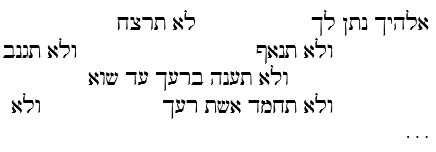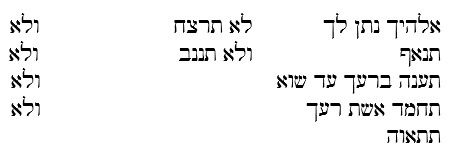Trouble with Adultery in the Cairo Genizah Biblical Manuscripts: T-S NS 67.34, T-S A40.77 et al.
Gary Martin, University of Washington
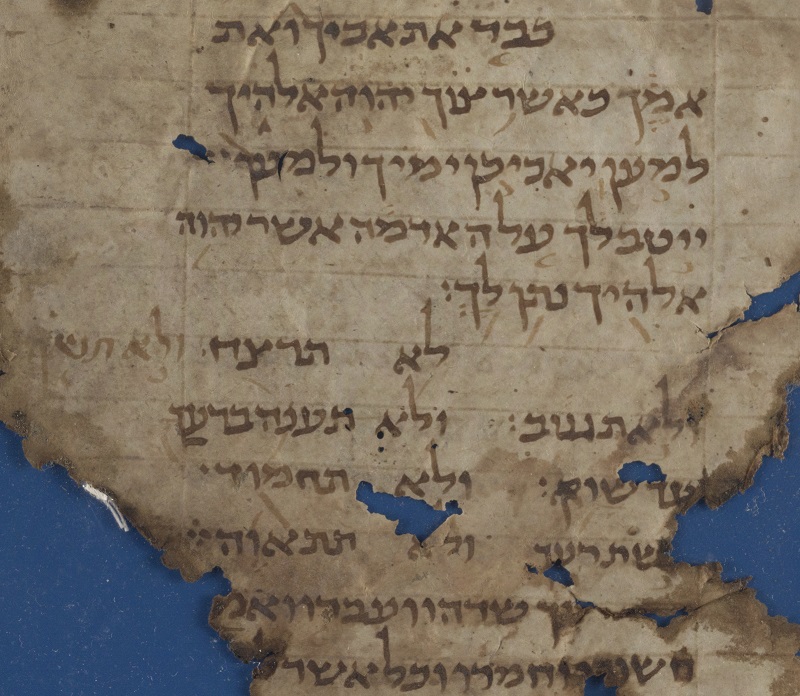
T-S NS 67.34 recto showing Deut 5:16-21
(with the command “you shall not commit adultery” written faintly in the margin)
Undoubtedly the most interesting typographical error in the history of Bible printing is the 1631 edition of the King James Bible, which has become known as the “Wicked Bible.” In the series of short “thou shalt not” statements in the Decalogue of Exodus 20, the “Wicked Bible” offers this scandalous reading:

Exod. 20.14, “Thou shalt commit adultery.”, from the Wicked Bible, Cambridge University Library BSS.201.C31.6
The story is well known, although it is not entirely clear whether this was merely an “innocent” printer error, or if something more devious was at play.
It turns out that this particular command has generated trouble elsewhere. For example, in the second publication of the Nash Papyrus (Burkitt, 1903), the reading לוא תאנף (“you shall not be angry”) is provided instead of לוא תנאף (“you shall not commit adultery”), which is the reading of the first publication of Nash (Cook, 1903). Now in the following year, Burkitt published a new edition of Nash in which he noted the typographical error and restored the reading to לוא תנאף (“you shall not commit adultery”).
In T-S NS 67.34, the phrase לא תנאף (“you shall not commit adultery”) was entirely omitted in the first copy, but corrected in the margin, where it appears in the same faint color ink with which the manuscript is cantillated. There is also a partial aleph, with the lower left leg just barely visible:1

Small section from: T-S NS 67.34 recto
A different issue concerning the adultery command is seen below in T-S A40.77 (Deut 5):
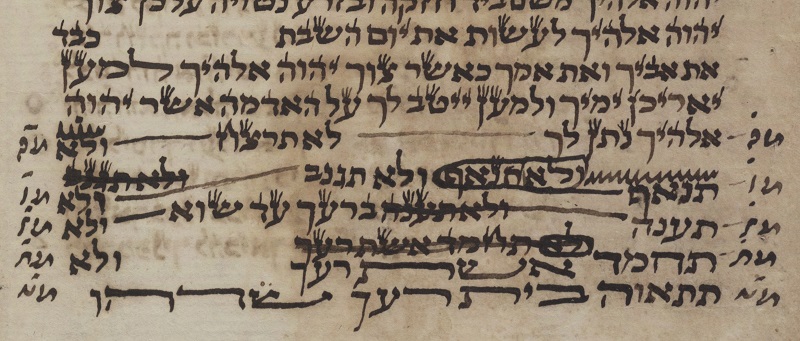
Section from: T-S A40.77 P2 recto
What grabs one’s attention foremost here is not the omission of ולא תנאף, but rather the corrector drawing attention to these words by encircling them.

Small section from: T-S A40.77 P2 recto
Yet, the larger issue here involves not only the two words of the adultery command, but several whole lines of text in which one sees a variety of scribal “fixes” — long lines (horizontal and oblique), squiggly lines, words crossed out, words rewritten in different locations, and marginal side notes. It is difficult to reconstruct every detail of difference between the first copy and the corrected copy.2 What does seem clear here is a concern for halakhic rules regarding spacing requirements of two types of parashiyyot (or pisqot) — the setumot (closed sections) and petuchot (open sections). In other words, it is not only important that the words “you shall not commit adultery” appear, they need to be present with correct spacing in relation to other elements in the text, or the entire manuscript becomes halakhically unacceptable.
One should note that the corrections made in T-S 40.77 do not indicate a problem with the canonical order of textual elements, but only their proper spacing.3
It is tempting to create a narrative that engages the scribe of T-S A40.77 with the scribe of the following entry in the catalogue, T-S A40.78, which shares the same features with T-S A40.77 — unvocalized, with tagim (also with circles in the margins perhaps to note sections).

Section from T-S A40.78 P3 recto
Here is a beautiful example of a manuscript with halakhically correct spacing in the same lines of text that were corrected in T-S 40.77. One can envision the scribe of this manuscript showing his copy to his colleague, scribe of T-S A40.77, and saying: “See, this is how it is done.”
However, as the scribe of T-S A40.78 continued his copy at the top of the next folio, this happened:

Section from T-S A 40.78 P4 recto
On the second line down, this scribe began writing Deut 5:21 all over again, the same verse he began writing in the middle of the bottom line on the previous folio, as follows:
ולא תתאוה בית רעך שדהו
At the top of the following folio he completes the verse with elongated letters:
ועבדו ואמתו שורו וחמרו
Then in the middle of the second line, the crossed out words are:
ולא תתאוה בית רעך שדהו ועבדו ואמתו שורו וחמרו וכל
It is at the word וכל where the scribe appears to have noticed his dittography. He then rewrote וכל in the blank space at the beginning of line 2, extended the horizontal stroke of the lamed above all the crossed out recopied words up to: אשר לרעך. The corrected version reads like the standard text of Deut 5.
Now as for the scribe of T-S A40.77, he got his top section right — no dittography!

Section from: T-S A40.77 recto
One scribe wins the error-free award at the bottom of a column, the other wins the award at the top of the following column. The series of short “thou shalt not commands” seems to have caused a few scribal jitters in both of these manuscripts.
A few other Genizah manuscripts show gaps or tears that impact the adultery command.
T-S NS 68.3 is almost completely missing לא תנאף in the lacuna and the faint ink following it:
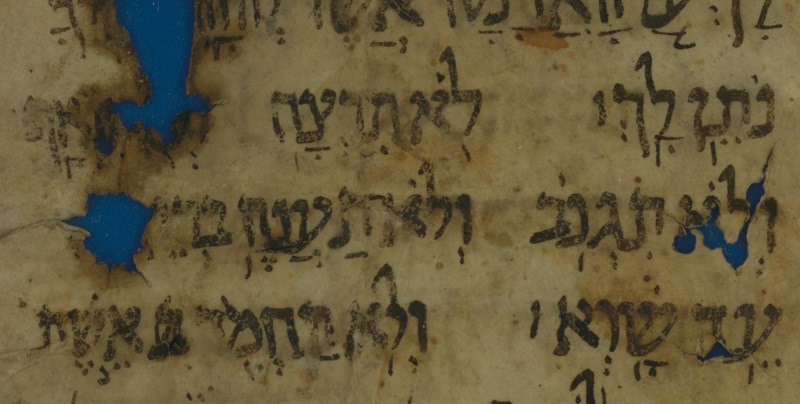
Section from: T-S NS 68.3
At the bottom of the left column in T-S NS 248.24, the last identifiable words are לא תרצח “you shall not commit murder.” The following phrase לא תנאף is torn away, or missing.
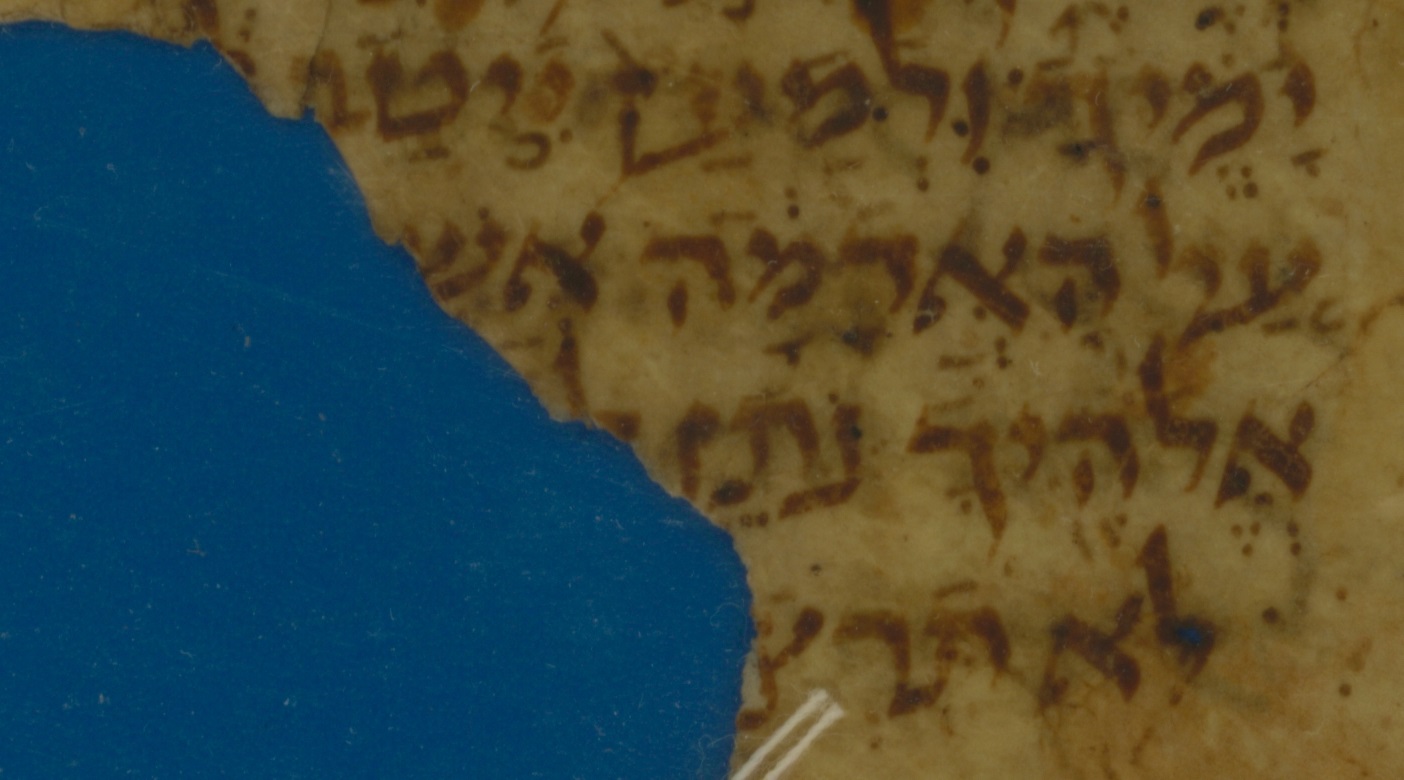
Section from: T-S NS 248.24 verso
But on the verso, the last two letters of תנאף are visible at the top of the column, but not ולא (!)
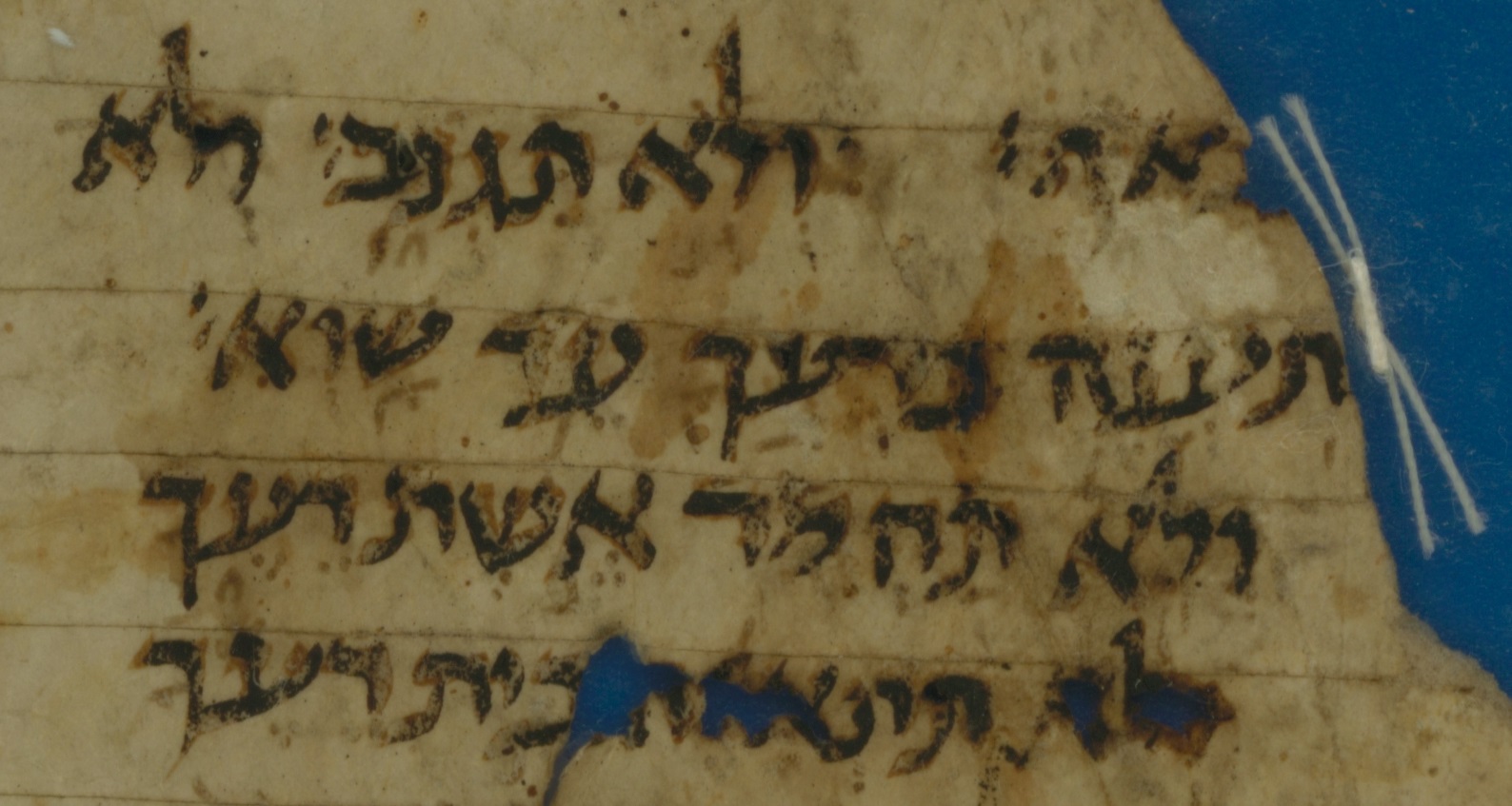
Section from: T-S NS 248.24 recto
In T-S NS 280.19 the extant text has: לא תרצח ולא תגנב ולא תענה
but תנאף (and the following ולא that belongs with תגנב) is missing in the section torn away:
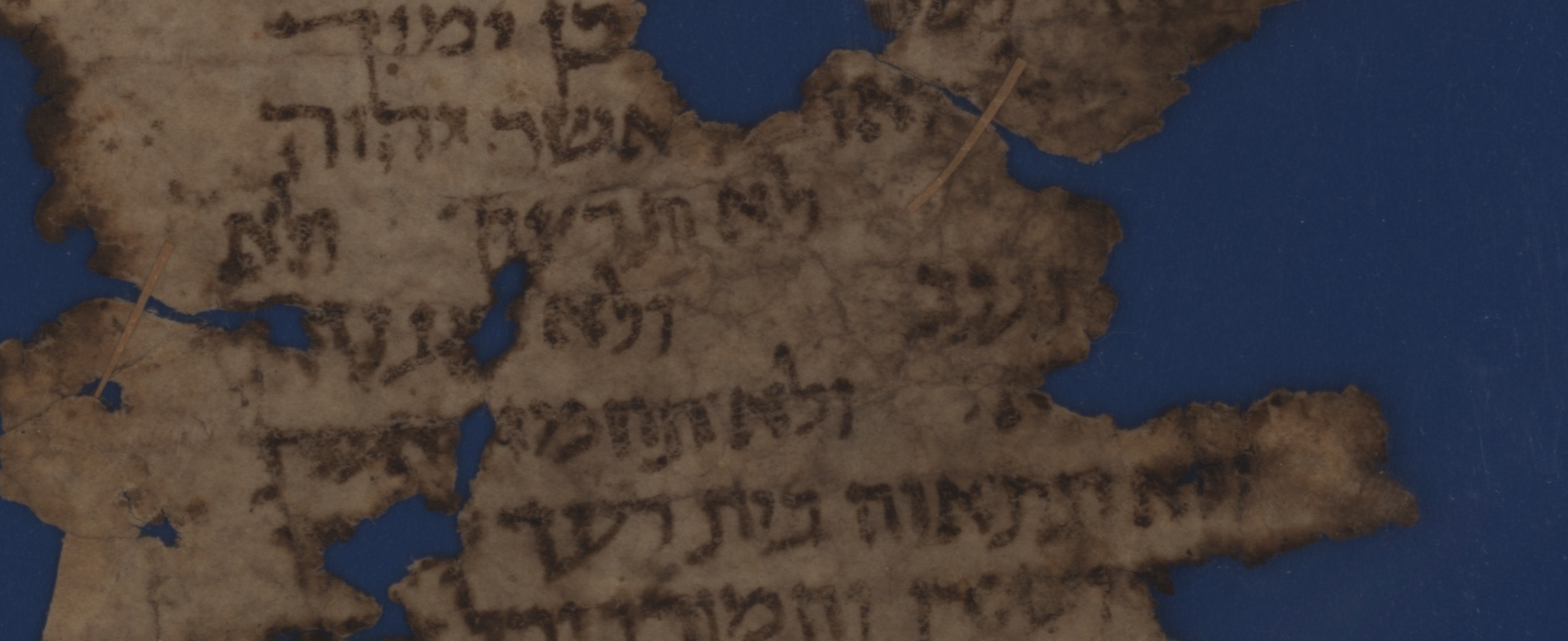
T-S NS 280.19 verso
In T-S AS 32.7, לא תרצח and לא תגנב are present, but לא תנאף is completely missing:
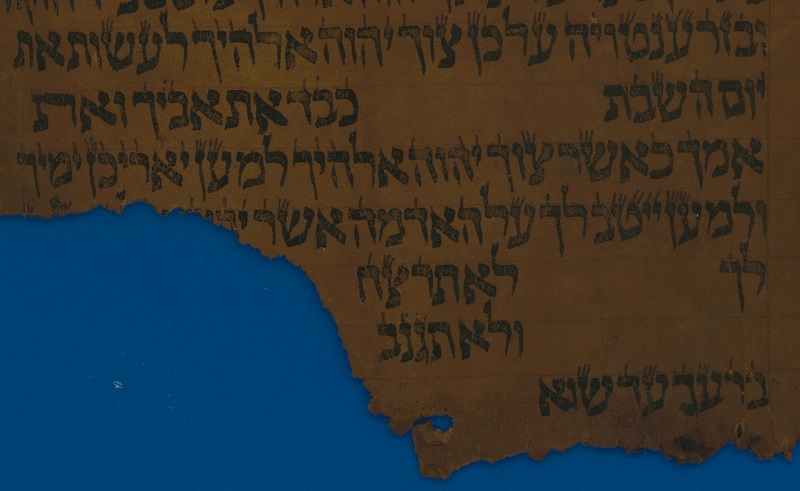
Section from: T-S AS32.7 recto
In T-S AS 33.2, לא תרצח and ולא תגנב are present, as is תנאף on the far right of the column, but its negation לא, which must have been written on the left edge of the column after תרצח is not legible, and even appears to be rubbed out!

Section from: T-S AS 33.2 recto
[Same image below with adjustments for brightness and contrast.]

Admittedly, I have offered here a selection of manuscripts that in one way or another display some kind of “trouble” with the adultery command of the Decalogue. The vast majority of Geniza manuscripts are fragmentary, and there are other commandments in the same Decalogue series that are not completely visible in the extant remains. In fact, there is a different command in the same series that appears to have been omitted, with a marginal note that provides a correction.
In T-S A2.15 the command לא תגנב “you shall not steal” is placed in the margin to the right of the column, with a circle marking its place in the body text:
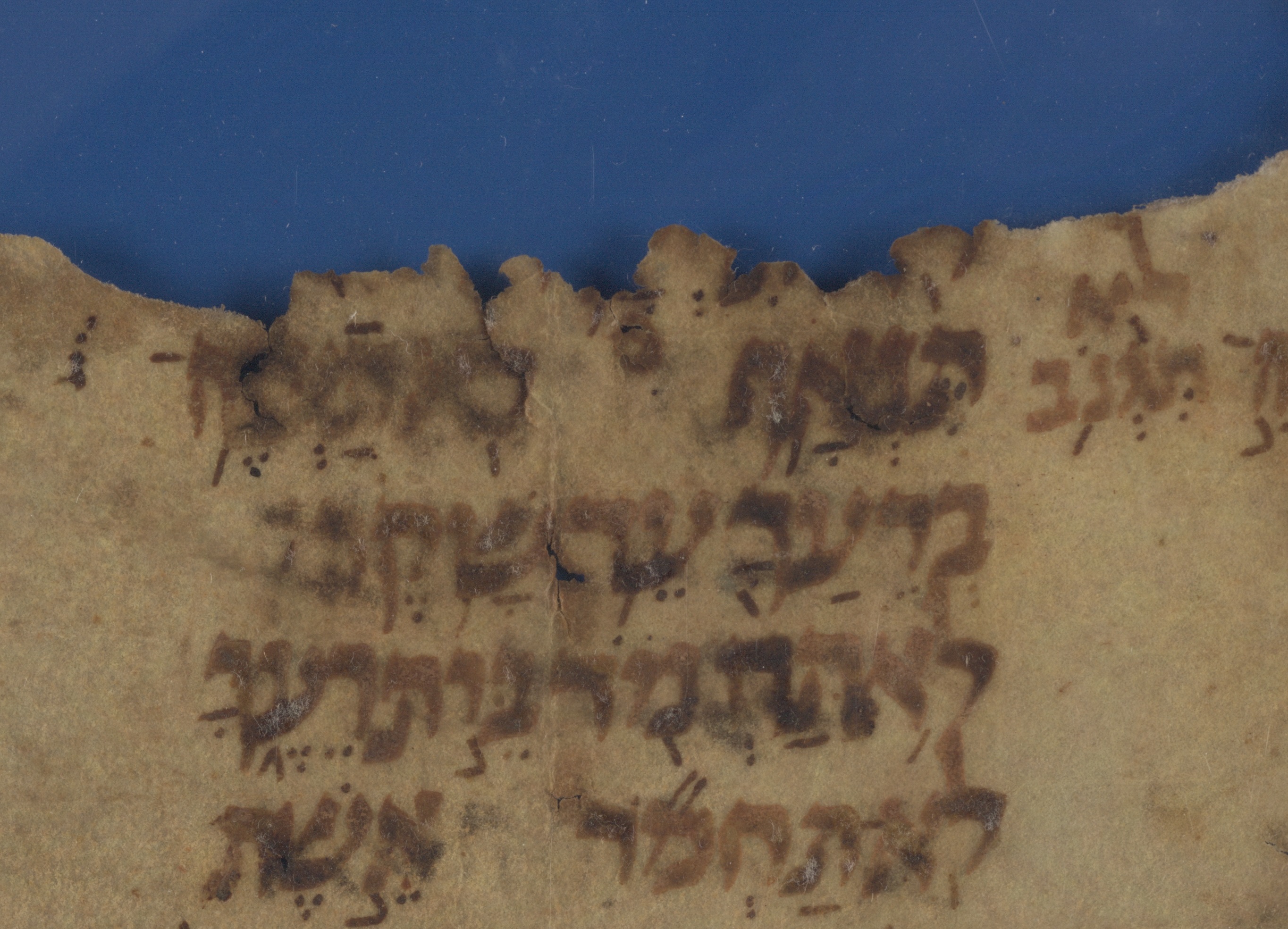
Section from: T-S A2.15
But even here it is hard to resist drawing attention to the fact that the first visible word in this column of text is תנאף (“you shall commit adultery”). Presumably, the negative לא would be found on the line above at the left of the column, now torn away. Or, perhaps we have here discovered among thousands of biblical fragments in the Cairo Geniza the medieval origin of the “Wicked Bible” :)
Addendum: Attempt to Reconstruct “First” and “Corrected” Copies of T-S A40.77
The following image was manipulated by “photoshopping” away items that appear to belong to the corrector. It is evident that the first copy would include text in which letters appear with tagim. Text containing letters that do not appear with tagim, but normally would have them, most likely derives from the corrector. Indeed, the spacings are not in accord with the rules.
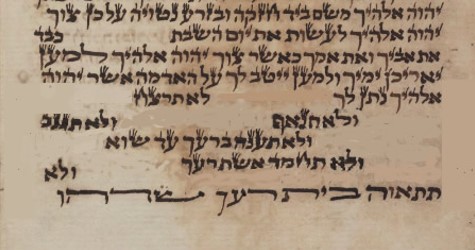
Section from: T-S A40.77 recto photoshopped by author
Using this manipulated image as the starting point, one can surmise the text envisioned by the corrector. The two versions appear in approximate typeset form below:
|
T-S A40.77. Reconstructed “First” Copy |
T-S A40.77. Reconstructed “Corrected” Copy |
|
|
|
Bibliography
Burkitt, 1903. “The Hebrew Papyrus of the Ten Commandments.” JQR 15 (1903): 392–408.
Burkitt, 1904. “The Nash Papyrus: A New Photograph.” JQR 16 (1904): 559–61.
Cook, 1903. “A Pre-Masoretic Biblical Papyrus.” PSBA (1903): 34–56.
Footnotes
1 This marginal correction is not noted in the catalogue entry for T-S NS 67.34 (Hebrew Bible Manuscripts in the Cambridge Genizah Collections, Vol 2: Taylor-Schechter New Series and Westminster College Cambridge Collection, p. 169, right column.)
2 See attempts to reconstruct the first copy and the implied corrected copy at the end of this article.
3 There is no general rule for many details of the layout of this section of the Decalogue. Other manuscripts show numerous different, but still halakhically viable, layout options. The catalogue entry for T-S NS 40.77 is incorrect where it indicates that “the order of the ten commandments is corrected.” The order of commandments is not the concern here; the corrector’s edits pertain only to aspects of textual spacing.
Cite this article
Martin, G. (2020). Trouble with Adultery in the Cairo Genizah Biblical Manuscripts: T-S NS 67.34, T-S A40.77 et al.. [Genizah Research Unit, Fragment of the Month, February 2020]. https://doi.org/10.17863/CAM.65166
If you enjoyed this Fragment of the Month, you can find others here.
Contact us: genizah@lib.cam.ac.uk

